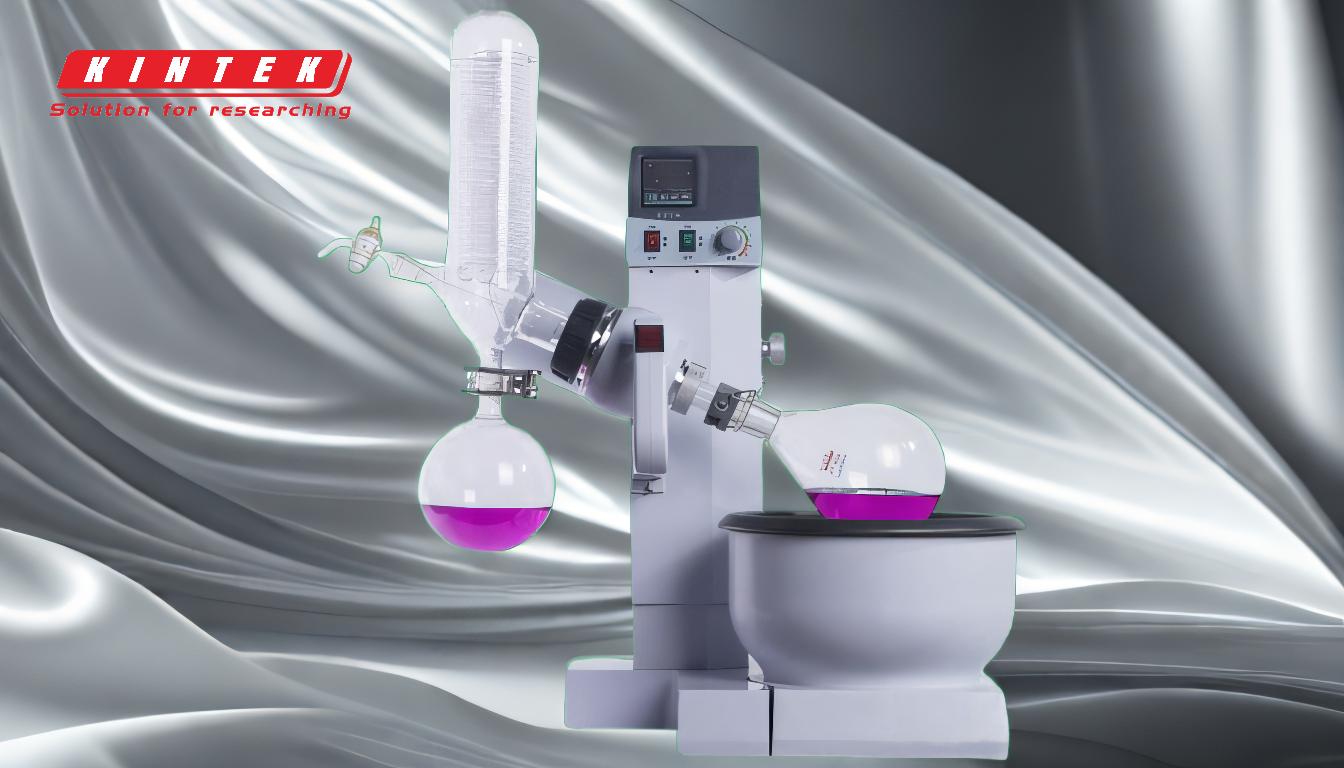Rotary evaporators (rotovaps) are widely used in laboratories for solvent removal and concentration of samples. However, they come with several limitations that can affect their efficiency, sample integrity, and usability. These limitations include sample loss due to bumping, slow evaporation rates, inefficiency with small samples, challenges with foaming or high-boiling-point solvents, and difficulties in cleaning and avoiding cross-contamination. Additionally, rotovaps are single-sample systems, which can be inefficient for high-throughput applications. Understanding these limitations is crucial for optimizing their use and mitigating potential issues.
Key Points Explained:

-
Sample Loss Due to Bumping:
- Description: Bumping occurs when a sample suddenly boils and erupts under vacuum conditions, leading to sample loss. This is particularly common with mixtures containing ethanol and water.
-
Mitigation Strategies:
- Adjust the vacuum pump's strength to control the boiling process.
- Modify the heating pot's temperature to reduce the likelihood of bumping.
- Use anti-boiling particles (e.g., boiling chips) to create a more controlled boiling environment.
- Employ specialized traps or condenser arrays to capture any sample that escapes during bumping.
-
Slow Evaporation Rates:
- Description: Rotary evaporators can be slow, especially when dealing with high boiling point solvents. This can lead to inefficiency and increased processing time.
-
Mitigation Strategies:
- Optimize the vacuum level and bath temperature to enhance evaporation rates.
- Consider using a more powerful vacuum pump or a higher temperature bath for stubborn solvents.
- Use a larger surface area flask to increase the rate of evaporation.
-
Inefficiency with Small Samples:
- Description: Working with small sample sizes can be inefficient, as the process may lead to wasted effort, lost time, and an increased risk of cross-contamination.
-
Mitigation Strategies:
- Use smaller flasks or adaptors designed for small sample volumes.
- Consider alternative concentration methods, such as centrifugal evaporators, for very small samples.
- Ensure proper cleaning and sanitization between runs to minimize cross-contamination.
-
Challenges with Foaming Samples:
- Description: Foaming samples can pose significant challenges, as they can lead to sample loss and contamination of the rotovap system.
-
Mitigation Strategies:
- Use defoaming agents to reduce foam formation.
- Employ specialized condensers designed to handle foaming samples.
- Adjust the vacuum and temperature settings to minimize foaming.
-
Difficulty in Cleaning and Sanitization:
- Description: The complex structure of rotary evaporators makes them difficult to clean and sanitize, increasing the risk of cross-contamination, especially after bumping incidents.
-
Mitigation Strategies:
- Disassemble and clean all components thoroughly after each use.
- Use appropriate cleaning agents and sanitization protocols.
- Consider using disposable liners or inserts to reduce the need for extensive cleaning.
-
Single-Sample Nature:
- Description: Rotary evaporators are designed to handle one sample at a time, which can be inefficient for high-throughput applications.
-
Mitigation Strategies:
- Use multiple rotovaps in parallel if high throughput is required.
- Consider alternative evaporation methods, such as parallel evaporators, for handling multiple samples simultaneously.
-
Annihilation of Substances:
- Description: In some cases, the evaporation process can lead to the annihilation or degradation of certain substances, particularly sensitive compounds.
-
Mitigation Strategies:
- Optimize the evaporation conditions (temperature, vacuum) to minimize degradation.
- Use protective additives or stabilizers if the sample is prone to degradation.
- Consider alternative concentration methods for sensitive compounds.
-
Spread of Distilled Substances on Flask Walls:
- Description: Distilled and concentrated substances often spread on the walls of the flasks, making recovery difficult.
-
Mitigation Strategies:
- Use flasks with a design that minimizes wall spread, such as those with a conical shape.
- Rinse the flask walls with a small amount of solvent to recover the concentrated substance.
- Consider using a rotovap with a recovery system designed to collect substances from the flask walls.
By understanding these limitations and implementing the appropriate mitigation strategies, users can optimize the performance of rotary evaporators and minimize potential issues.
Summary Table:
| Limitation | Description | Mitigation Strategies |
|---|---|---|
| Sample Loss Due to Bumping | Sudden boiling under vacuum causing sample loss. | Adjust vacuum, modify temperature, use anti-boiling particles, employ specialized traps. |
| Slow Evaporation Rates | Inefficient evaporation, especially with high boiling point solvents. | Optimize vacuum and temperature, use a more powerful pump, or larger flasks. |
| Inefficiency with Small Samples | Wasted effort and time when working with small volumes. | Use smaller flasks, consider alternative methods, and ensure proper cleaning. |
| Challenges with Foaming Samples | Foaming leads to sample loss and system contamination. | Use defoaming agents, specialized condensers, and adjust settings. |
| Difficulty in Cleaning | Complex structure increases cross-contamination risks. | Disassemble and clean thoroughly, use disposable liners, and follow sanitization protocols. |
| Single-Sample Nature | Inefficient for high-throughput applications. | Use multiple rotovaps or parallel evaporators. |
| Annihilation of Substances | Degradation of sensitive compounds during evaporation. | Optimize conditions, use protective additives, or alternative methods. |
| Spread of Distilled Substances | Concentrated substances spread on flask walls, making recovery difficult. | Use conical flasks, rinse walls, or employ recovery systems. |
Need help optimizing your rotary evaporator setup? Contact our experts today for tailored solutions!










